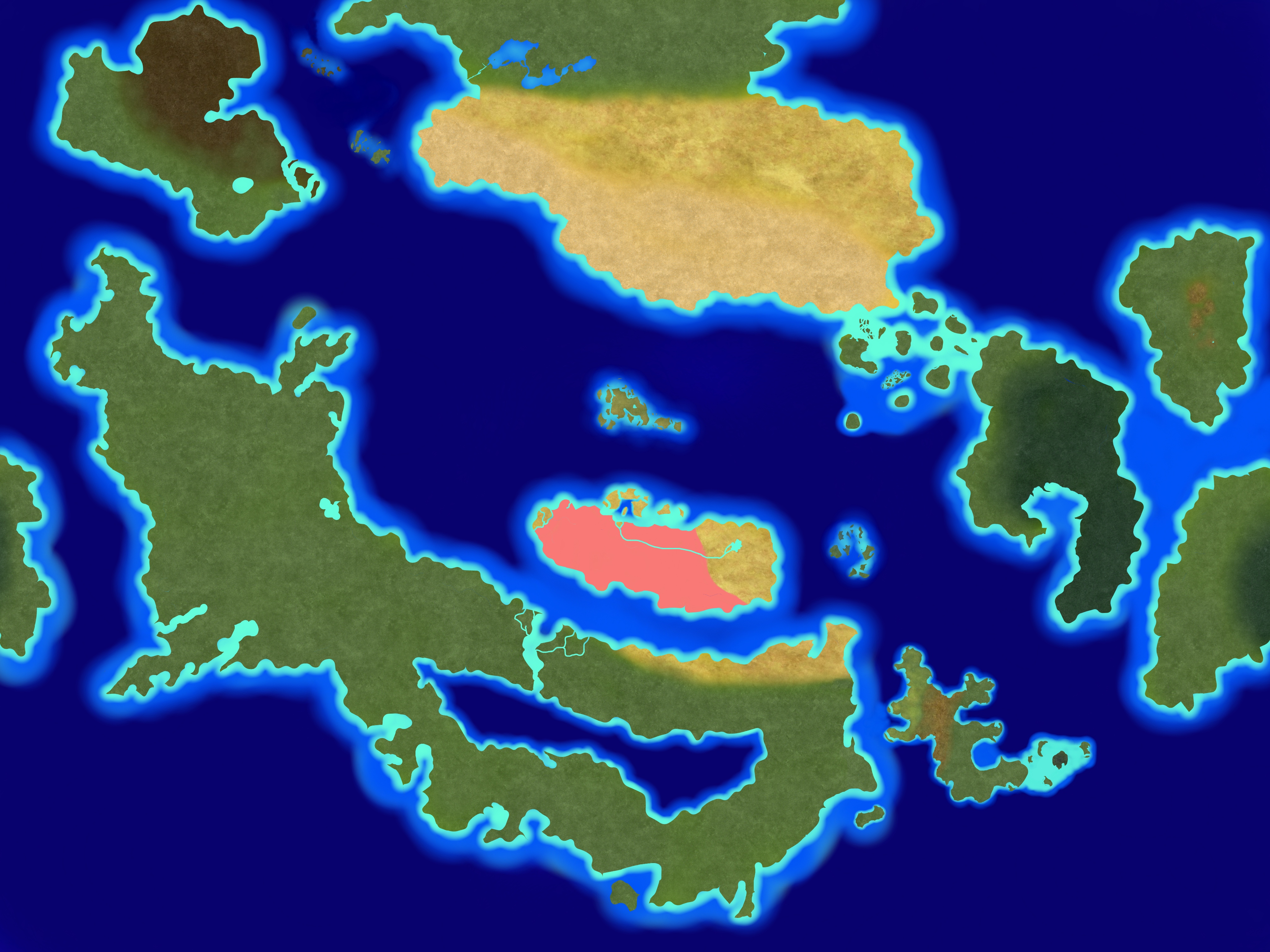Foot Grabber
Odontomachus stipantauceps
Odontomachus stipantauceps (Foot Grabber) is a species of highly aggressive predatory ant found within dry grasslands of the Hollow Earth. Foot Grabber soldiers stand typically stand 3-3.5 feet tall, and 5 feet in length, while workers are around 2 feet in height and 3 feet in length. Foot grabbers resemble large ants, but have many unique features. Soldiers have many rigid spikes on their bodies to deter other animals from trying to hunt them, while workers have smooth bodies to better allow for passage through underground tunnels. The most prominent feature of the soldier ants are the large sharp mandibles that are used for their hunting tactics.
Like most ants, foot grabbers form eusocial colonies structured around serving a queen. Colonies will typically only have a single queen, and the queen can vary from 6 to 10 feet long, being up to 5 feet tall at their biggest observed size.
Colonies follow similar structures to common anthills, with long winding tunnels with large pockets for storing food and larvae. They will normally only have a single entrance, but colonies have been observed to have more than one (See: Juland Savannah Supercolony*).
Foot grabber ants are carnivorous, and actively hunt for their food. Soldiers, the females of the colony, will travel in packs of 3-4 and bury themselves just below the surface of the earth. Here they will lie in wait, with the only exposed part of their bodies being their mandibles. Their mandibles are held open using a unique mechanism of muscles, and are partially hidden from view by the grasses of the grasslands they inhabit. When a creature steps between the open mandibles of the ant, they will immediately clamp shut, and lock in place. The ant that has grabbed hold will then release a signal to the other ants, and they will emerge from the ground to attack and kill the trapped prey. Soldiers can wait in their hunting position for days in wait of prey, slowing down their bodily functions in a state of partial torpor.
Once the prey has been killed, typically due to blood loss, they will be dragged back to the colony and stored in large food dens. If prey is too big to fit through the entrance, it will be bit into smaller pieces by the soldiers and sent down in chunks.
Like most ants, foot grabbers form eusocial colonies structured around serving a queen. Colonies will typically only have a single queen, and the queen can vary from 6 to 10 feet long, being up to 5 feet tall at their biggest observed size.
Colonies follow similar structures to common anthills, with long winding tunnels with large pockets for storing food and larvae. They will normally only have a single entrance, but colonies have been observed to have more than one (See: Juland Savannah Supercolony*).
Foot grabber ants are carnivorous, and actively hunt for their food. Soldiers, the females of the colony, will travel in packs of 3-4 and bury themselves just below the surface of the earth. Here they will lie in wait, with the only exposed part of their bodies being their mandibles. Their mandibles are held open using a unique mechanism of muscles, and are partially hidden from view by the grasses of the grasslands they inhabit. When a creature steps between the open mandibles of the ant, they will immediately clamp shut, and lock in place. The ant that has grabbed hold will then release a signal to the other ants, and they will emerge from the ground to attack and kill the trapped prey. Soldiers can wait in their hunting position for days in wait of prey, slowing down their bodily functions in a state of partial torpor.
Once the prey has been killed, typically due to blood loss, they will be dragged back to the colony and stored in large food dens. If prey is too big to fit through the entrance, it will be bit into smaller pieces by the soldiers and sent down in chunks.




Comments